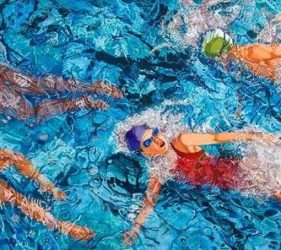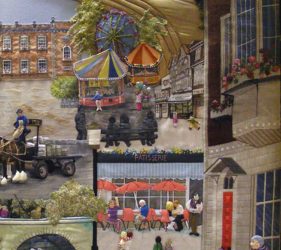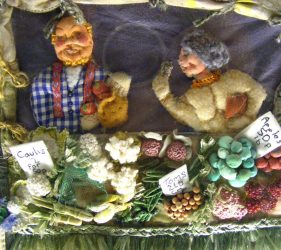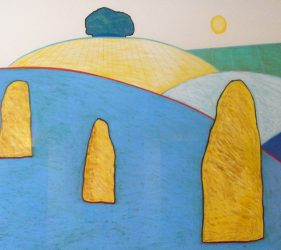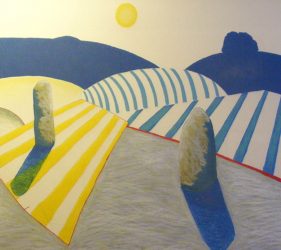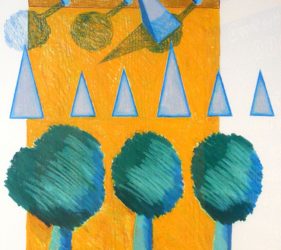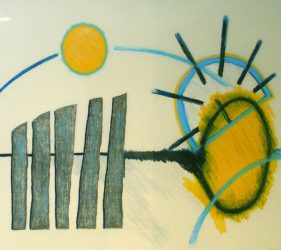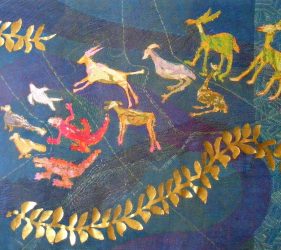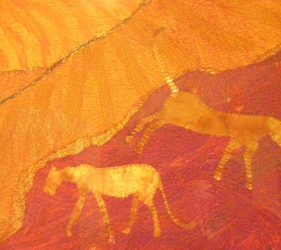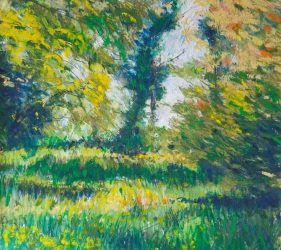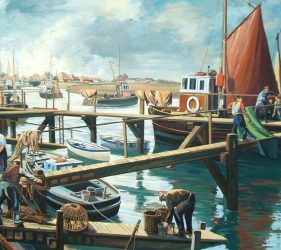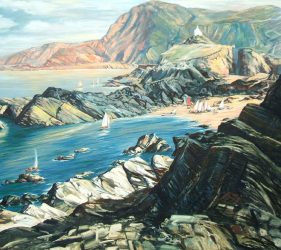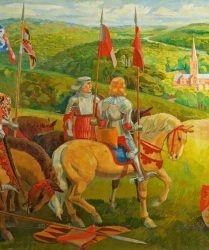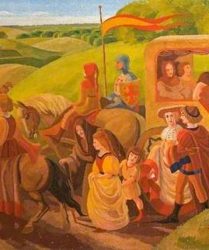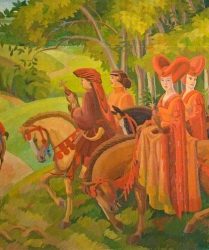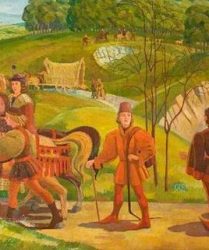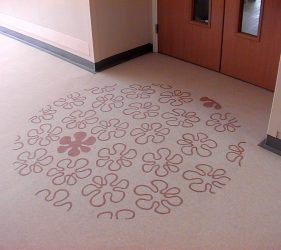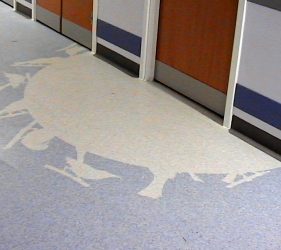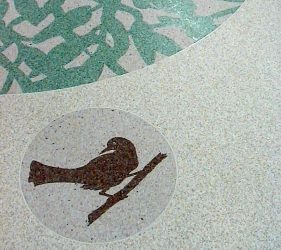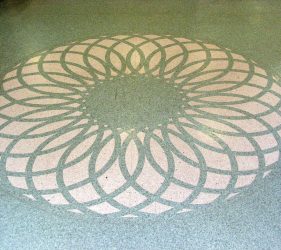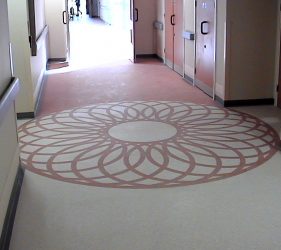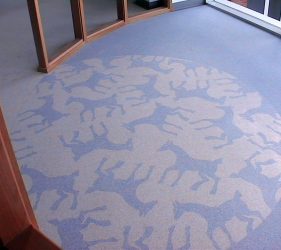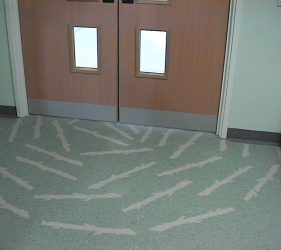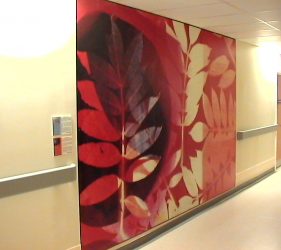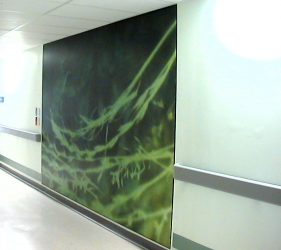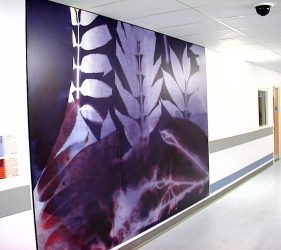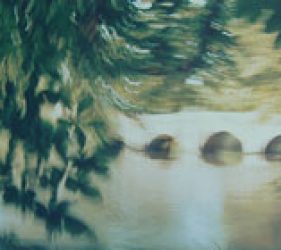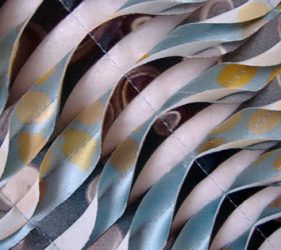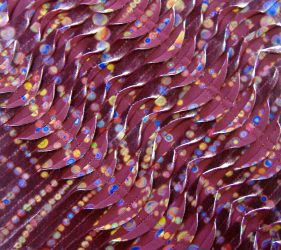Artist: Ivy Smith
Location: Corridor outside Amesbury Ward, Level 4, Phase II building
Ivy’s 5ft long oil painting, installed in the Orthopaedics department on Level 4, shows bathers in a swimming pool. Ivy met with staff from the department including physiotherapists, occupational therapists and nursing staff and they all expressed a preference for the painting to show physical activity – ‘what patients may aspire to when they are better’. Ivy chose to paint swimmers for the commission as swimming is an activity most people have experienced.
Ivy said, “The figures in my work are drawn from life and this gives an immediacy and sense of recognition. Swimming is a subject of great compositional potential. I feel the suggestion of weightlessness may be particularly welcome to people grounded by broken bones. The composition contrasts two energetic, splashing figures with the gracefulness and buoyancy of two swimmers reaching the edge of the pool. The figures form the main compositional structure of the work, but an important element of the image is the water, with its strong colour and its particularity as it flows over and around the figures.”
This commission was funded by Arts Council England, South West

